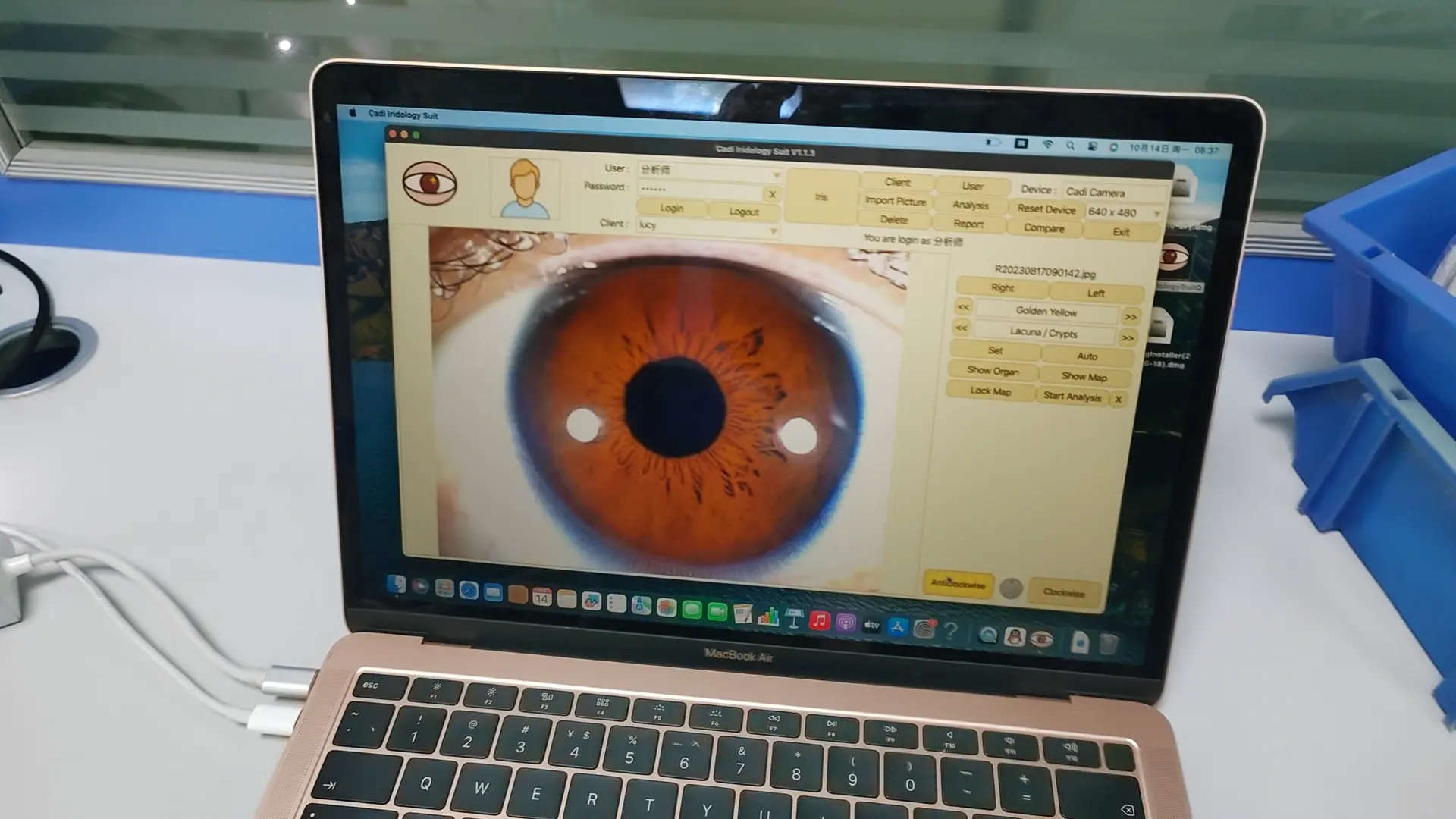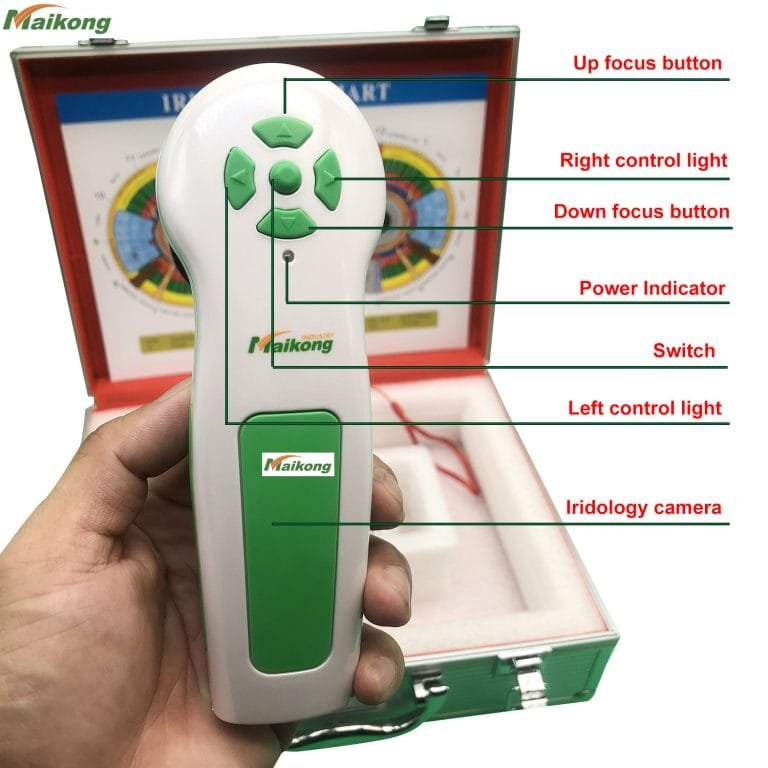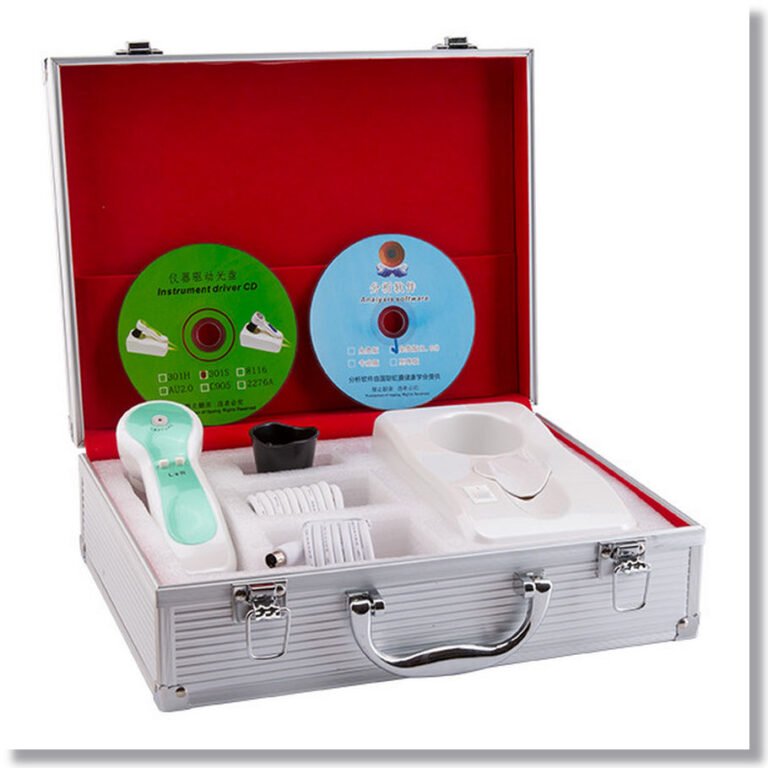
What is iridology?
“The Iris, Sclera and Pupil of the eye show the veil the soul has created, through consciousness (or forgetfulness), that reflects the illusion which prepares the soul for attaining the reality of full enlightenment.”
~David J. Pesek, Ph.D., September 1988
Eyes have long been referred to as the “Windows of the Soul.” But few people are aware of just how true this observation is. Accurate analysis of iris structure and pigmentation provides information about you or your clients that is hard to find through other methods. This information is so valuable that Iridology deserves to become a widely practiced assessment tool in both the physical and psychological health fields. There are a multitude of factors that influence our health and personality, and many of these factors are reflected in the iris. Look closely at your eyes in a mirror, and then at the irises of those around you. You will see many different patterns of iris fibers and colors. Like fingerprints or faces, no two are exactly alike, and neither are we! The iris structure is so unique; it is now being used for security identification at ATM machines and airports. Microsoft’s house of the future will use an eye scanner to identify residents and unlock the door.
Iridology is based on the scientific study of the iris — the colored part of the eye. Like markings on a map, the iris reveals physiological conditions, psychological health risks, challenges and/or strengths of various organs and personality traits.
Through iridology we can get an understanding of your past, present, and potential future health conditions by assessing the various body systems. Your inherited tendencies compounded by toxic accumulations in various parts of your body are also revealed.
The Science of Iridology is based on the analogy of one of the most complicated tissue structures of the whole body – the iris.
It is a method whereby the doctor or health practitioner can tell, from markings or signs in the iris, the reflex condition of various organs and systems of the body. These markings represent a detailed picture of the integrity of the body; it’s constitutional potentials, areas of congestion or toxic accumulations and inherent challenges and gifts.
The four principles that form the cornerstones of iridology are:
The condition of the nerves
The condition of the blood and lymph system
Adequate circulation
Nutrition – rest quality, breathing – state of mind
Nature has provided us with an invaluable insight into the vital status of the health of the body by transmitting this information to the eye.
The laboratory testing procedures practiced today, which are not always necessary, are expensive, time-consuming and, often, uncomfortable to the patient. With iridology, we have a simple, painless, economical and non-invasive way of looking into the body. This is not to say that it should exclude other forms of analysis. On the contrary, it may be employed in conjunction with any other system of analysis or a diagnosis that a practitioner wishes to use. Now, more than any other time in history, we are in a need of accurate and less complex means of analyzing a patient’s condition.
Eighty percent of the diseases treated in this country are of a chronic nature. The tissue found in chronically afflicted patients can be monitored better in the iris of the eye than, possibly, by any other method of analysis.
Iridology gives an essential insight to the development of these chronic diseases or the diminishing of that disease or inflammation.
The Science of Iridology is based on the analysis of one of the most complicated tissue structures of the whole body-the iris. Iridology offers a unique perspective to the concept and practice of preventive health care. It involves a non-invasive diagnostic procedure, commonly used by the European practitioners and may be useful in the detection of existing conditions as well as inherited genetic weaknesses. It is known that approximately 300 thousand nerves from various parts of the body make their way to the optic nerve. Therefore, projection of systemic activity may be visible at the iris.
A system of pseudodiagnosis based on the belief that each body region and/or organ is represented by one of six regions on the iris; iridologists claim to diagnose imbalances in the body by studying the shape, colour(s) and qualities of the iris. Anecdotal reports imply that diseases can be identified by changes in the iris including anaemia, cardiac conditions, trauma, liver disease, adrenal dysfunction and renal stress. Interpretation of the changes seen differs according to the iridologist: while all agree that colour changes are significant, for some, whitish discolouration is believed to indicate overstimulation, while for others, these same spots indicate an accumulation of toxins (e.g., uric acid or cholesterol); all agree that clarity of the iris indicates healthiness. Once identified, defects can (in theory) be treated using vitamins, herbs, minerals and other substances.

What is 12MP iridology camera and software?
What is 12MP iridology camera and software?
Specification:
* Nice appearance and innovative design
* LED illuminator around lens
* Imported lens with plated layer
* 12.00 Mega pixels high resolution CCD sensor
* Special DSP image processor, Optical Image Stabilizer
* Single capture button and digital pause capture.
* Adjustable focus to give clear image.
* Auto white balance and contrast adjustment, Color Temperature Filter
* Compatible with iris lens, hair lens.
* Deliver clear and accurate images.
* Easy to operate.
* OS: Windows XP, WIN2000, 2003, Vista, Win7. Win8,win 10
Introduction:
The Iriscope is easy to operate. It is plugged directly into the computer and doesn’t require an electrical power supply. Light brightness and focus can be adjusted by using the switch on the handle.
The iris scope uses its own software which can save client information and photos as well as product recommendations. Analysis reports can be printed and photos are saved according to the date and time taken.
This machine will help the client know his health condition frankly ,including the problem which you have get in the former ,now and future .and the Iridology will be your health counselor, tell you how to keep away from the illness and sub-health.
Why you choose our iriscope?
1. Software easy to use, help you to command. Advanced auto iris analysis technology to provide the best help for beginners to learn.
2. Iris analysis system: international technology, unique functions.
3. Iris analysis system is a medicinal tool that checks the body conditions and prevents diseases from occurring.
4. We brought in the advanced iris analysis technology from Germany to lead people to discover sources of illness, and care the body health and spirit in anyways.
5. The instrument can show the body conditions of customers and suggest customers the suitable health food, and the plans to care their bodies.
6. iriscope machine can edit your product in the software and show on the reports.help you promotion healthy product.
Product Details:
Place of Origin
China
Brand Name
MK
Certification
CE
Model Number
GY-9822U
Maximum resolution
3840*2880
feature
4 LED/2 LED lamps control
Pixels
12MP
language
English / Spanish
software
with pro Analysis software
Accessories:
Handset
1pc
30X Iris Lens
1pc
Aluminum Box
1pc
Lens protective cover
1pc
IRIDOLOGY CHART
1pc
User Manual
1pc
CD (Driver and Pro Analysis Software)
1pc
Software USB KEY
1pc

What is iridology?
What is iridology?
Iridology (also known as iridodiagnosis or iridiagnosis) is an alternative medicine technique whose proponents claim that patterns, colors, and other characteristics of the iris can be examined to determine information about a patient’s systemic health. Practitioners match their observations to iris charts, which divide the iris into zones that correspond to specific parts of the human body. Iridologists see the eyes as “windows” into the body’s state of health.
Iridologists claim they can use the charts to distinguish between healthy systems and organs in the body and those that are overactive, inflamed, or distressed. Iridologists claim this information demonstrates a patient’s susceptibility towards certain illnesses, reflects past medical problems, or predicts later health problems.
As opposed to evidence-based medicine, iridology is not supported by quality research studies and is widely considered pseudoscience. The features of the iris are one of the most stable features on the human body throughout life.[disputed – discuss] The stability of iris structures is the foundation of the biometric technology which uses iris recognition for identification purposes.
In 1979, Bernard Jensen, a leading American iridologist, and two other iridology proponents failed to establish the basis of their practice when they examined photographs of the eyes of 143 patients in an attempt to determine which ones had kidney impairments. Of the patients, forty-eight had been diagnosed with kidney disease, and the rest had normal kidney function. Based on their analysis of the patients’ irises, the three iridologists could not detect which patients had kidney disease and which did not.
The iris is the greenish-yellow area surrounding the transparent pupil (showing as black). The white outer area is the sclera, the central transparent part of which is the cornea.Iridologists generally use equipment such as a flashlight and magnifying glass, cameras or slit-lamp microscopes to examine a patient’s irises for tissue changes, as well as features such as specific pigment patterns and irregular stromal architecture. The markings and patterns are compared to an iris chart that correlates zones of the iris with parts of the body. Typical charts divide the iris into approximately 80–90 zones. For example, the zone corresponding to the kidney is in the lower part of the iris, just before 6 o’clock. There are minor variations between charts’ associations between body parts and areas of the iris.
According to iridologists, details in the iris reflect changes in the tissues of the corresponding body organs. One prominent practitioner, Bernard Jensen, described it thus: “Nerve fibers in the iris respond to changes in body tissues by manifesting a reflex physiology that corresponds to specific tissue changes and locations.” This would mean that a bodily condition translates to a noticeable change in the appearance of the iris, but this has been disproven through many studies. (See section on Scientific research.) For example, acute inflammatory, chronic inflammatory and catarrhal signs may indicate involvement, maintenance, or healing of corresponding distant tissues, respectively. Other features that iridologists look for are contraction rings and Klumpenzellen, which may indicate various other health conditions.
Seven rings Iris zones/rings and accompanying body region/organ
Inner: Stomach.
Second: Small and large intestine.
Third: Circulation of blood and lymph.
Fourth: Internal organs and endocrine system.
Fifth: Musculoskeletal system.
Outer: Skin and organs of elimination.



































